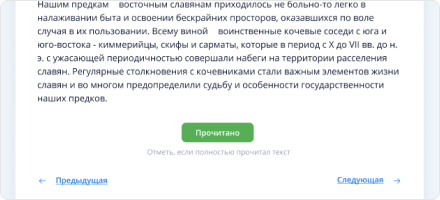Прочитайте текст и выполните заданиt. Запишите в поле ответа цифру 1, 2, 3 или 4, соответствующую выбранному Вами варианту ответа.
Monsters and mythical beasts perform a role in JK Rowling’s work which transcends that of world-building: they add symbolic and psychological depth, as well as reminding us that we are visiting a magical place. Rowling is both an inventor and archivist of fantastical animals, populating her universe with a mixture of what one might term ‘classic monsters’ (trolls, centaurs, mer-people) and folklore staples (bowtruckles, erklings), alongside her own inventions (dementors).
Some of these collected monsters are vastly better known than others: grindylows and boggarts, for example, have origins in Celtic and English folklore, but they are hardly household names. These relatively minor creatures often have a less-than-fantastical backstory: grindylows live in shallow water and threaten to grab at children with their green, reed-like arms. It isn’t difficult to see here both an explanation for the existence of the grindylow – it shares many characteristics with water plants, which are usually mobile and thus have their own disquieting appearance – and an explanation for why such stories might thrive – as a warning from parents to their children to keep away from a potential hazard, even if the risk was more likely to come from drowning than a malevolent water sprite.
But the vast majority of Rowling’s best-loved monsters have winged their way from the Ancient World to her modern, magical one. Fawkes the Phoenix is not only a fantastic beast, capable of auto-regeneration, he’s also a historical one. His colouring – red and gold – is the same as that of the phoenixes mentioned by Herodotus in his Histories from the Fifth Century BCE. Herodotus is known as the ‘father of history’ and, by his critics, as the ‘father of lies’. He reports what he is told by people he meets on his travels, often without the presentation of further evidence. In this instance, he’s told that phoenixes live in Egypt, so he relays this information to his readers. He does add that he hasn’t seen the creature himself, only pictures of one.
Another Harry Potter animal who has undergone changes to his fantastical nature is the multi-headed dog. Cerberus, the dog who guards the entrance to the Underworld in Greek myth, is a dog of many talents but no fixed number of heads. The poet Hesiod reckoned he was a 50-headed beast, and Pindar was more ambitious still, suggesting a hundred heads. Later Greek and Roman writers usually go for three, although vase painters – there’s a beautiful example of Cerberus on a vase in the Louvre – often depict him with two. Perhaps two heads are better than three, when it comes to painting them. However many heads he has, Cerberus has one thing in common with Fluffy, the three-headed dog in the first Harry Potter novel: both are distracted by music.
The philosopher’s stone itself has its roots in both myth and history: Dumbledore’s friend and the stone’s inventor, Nicolas Flamel, was a real scribe who lived in Paris in the 14th Century. Many years after Flamel’s death, he was said to have discovered the secret to eternal life: later writers attributed alchemical skills to him but there is no evidence to suggest he actually possessed these. Nonetheless, he has a street named after him in Paris today (as does his wife Pernelle), which is a kind of immortality, at least.
Other creatures serve allegorical purposes too: elves have been much grander elsewhere than in Rowling’s work (think of the superiority and otherness of the elves in Tolkien’s work, for example). Rowling’s house-elves are a clear reminder of slavery and servitude. Similarly, centaurs and giants suffer under Umbridge’s domination of Hogwarts, since they are regarded as less than human. Species-ism stands in for racism very easily.
It is worth noting that although dragons and basilisks put Harry and his friends in physical peril, the scariest creatures in the Potter universe are the dementors – creatures Rowling invented herself. These may bear some physical similarity to wraiths, and the Black Riders in The Lord of the Rings, but the psychological and emotional damage they cause is their own. Rowling has linked them with her own experience of depression, reminding us (if such reminders were necessary) that the darkest monsters most of us will face are those in our own minds.
13
What is TRUE about grindylows?
1) Tales about them don’t serve any educational purpose
2) They are based on some real phenomenon
3) Their origins can be found in Roman myths
4) According to the legends, they help children who fell into the lakes




















